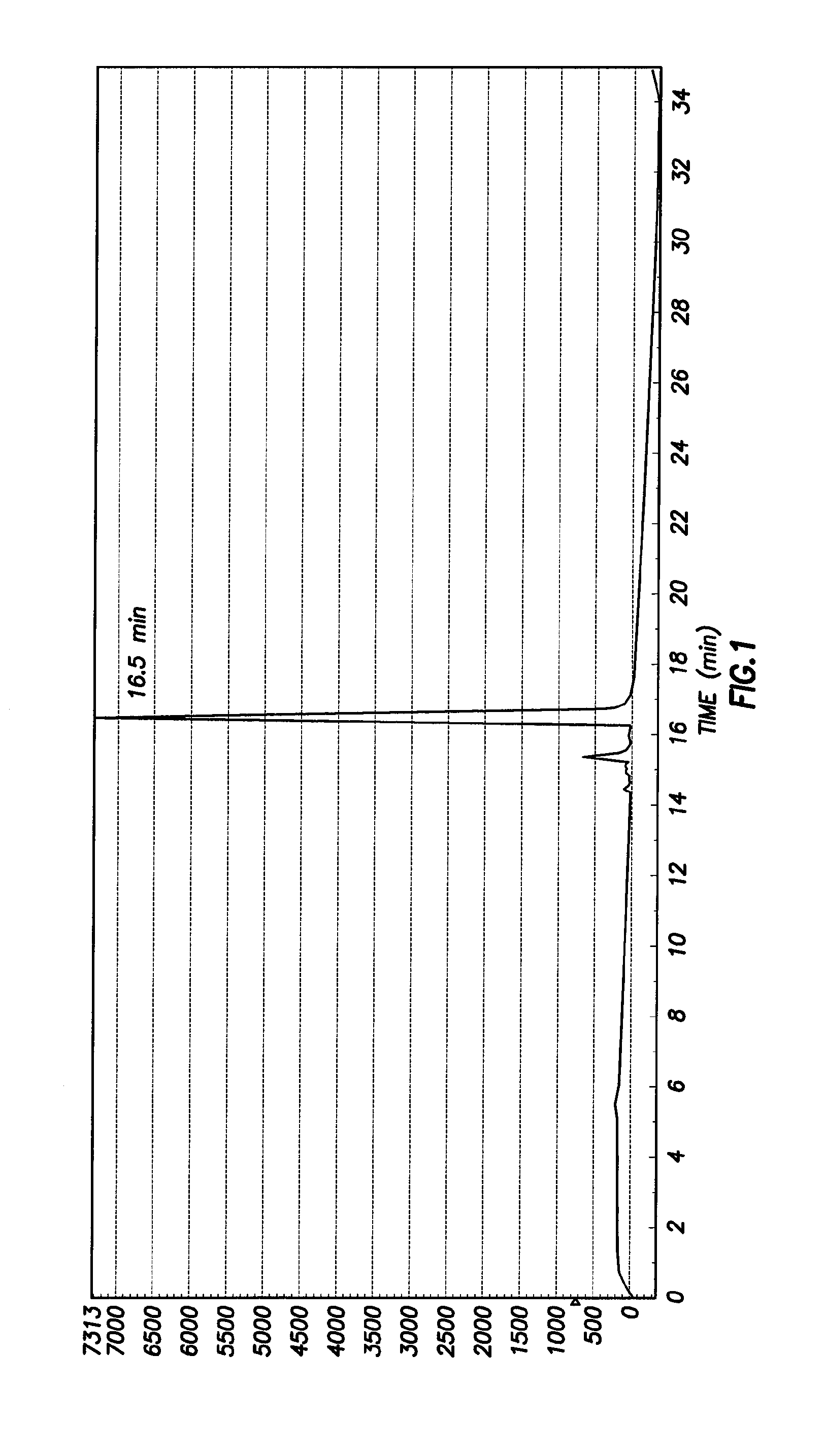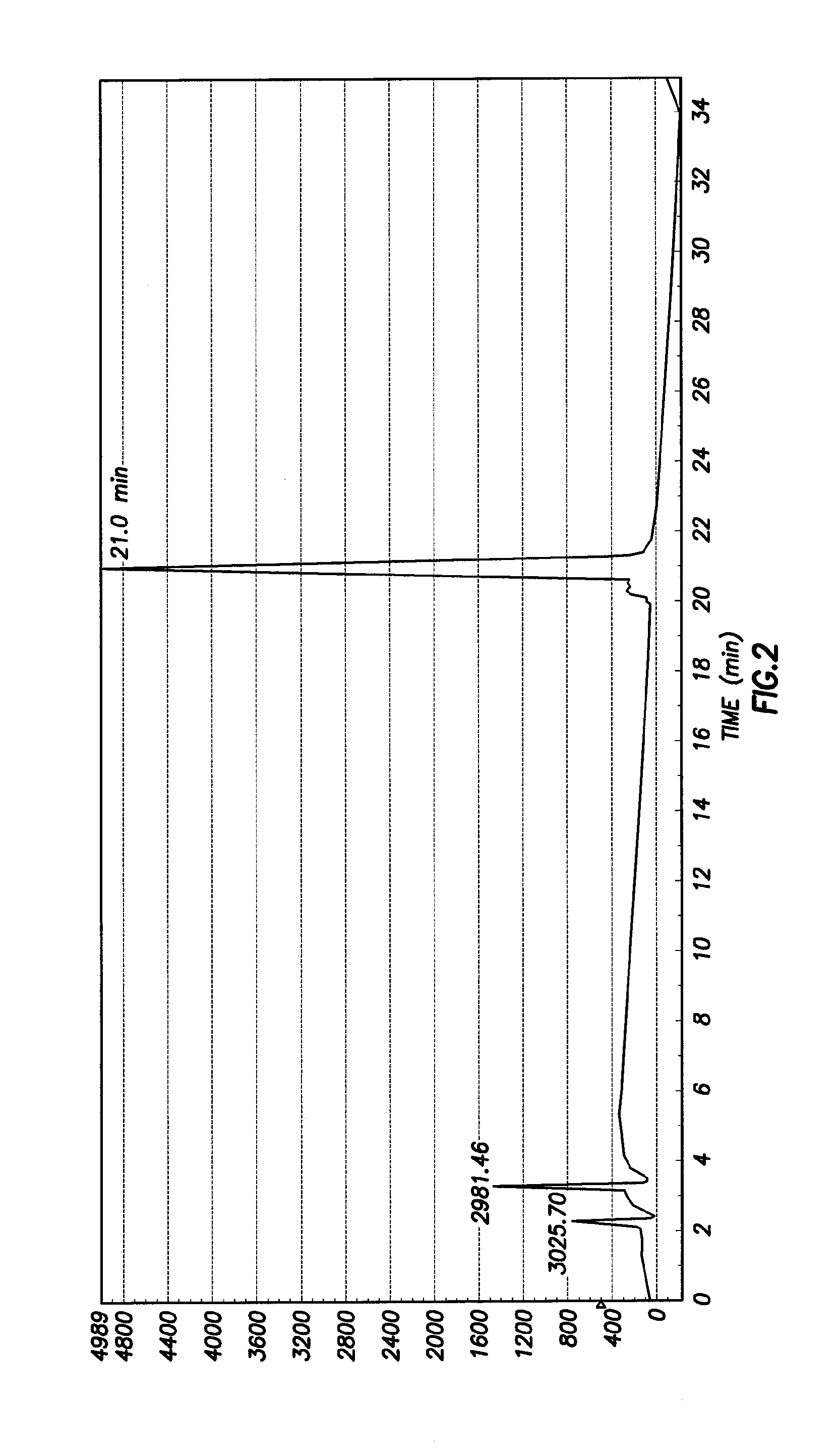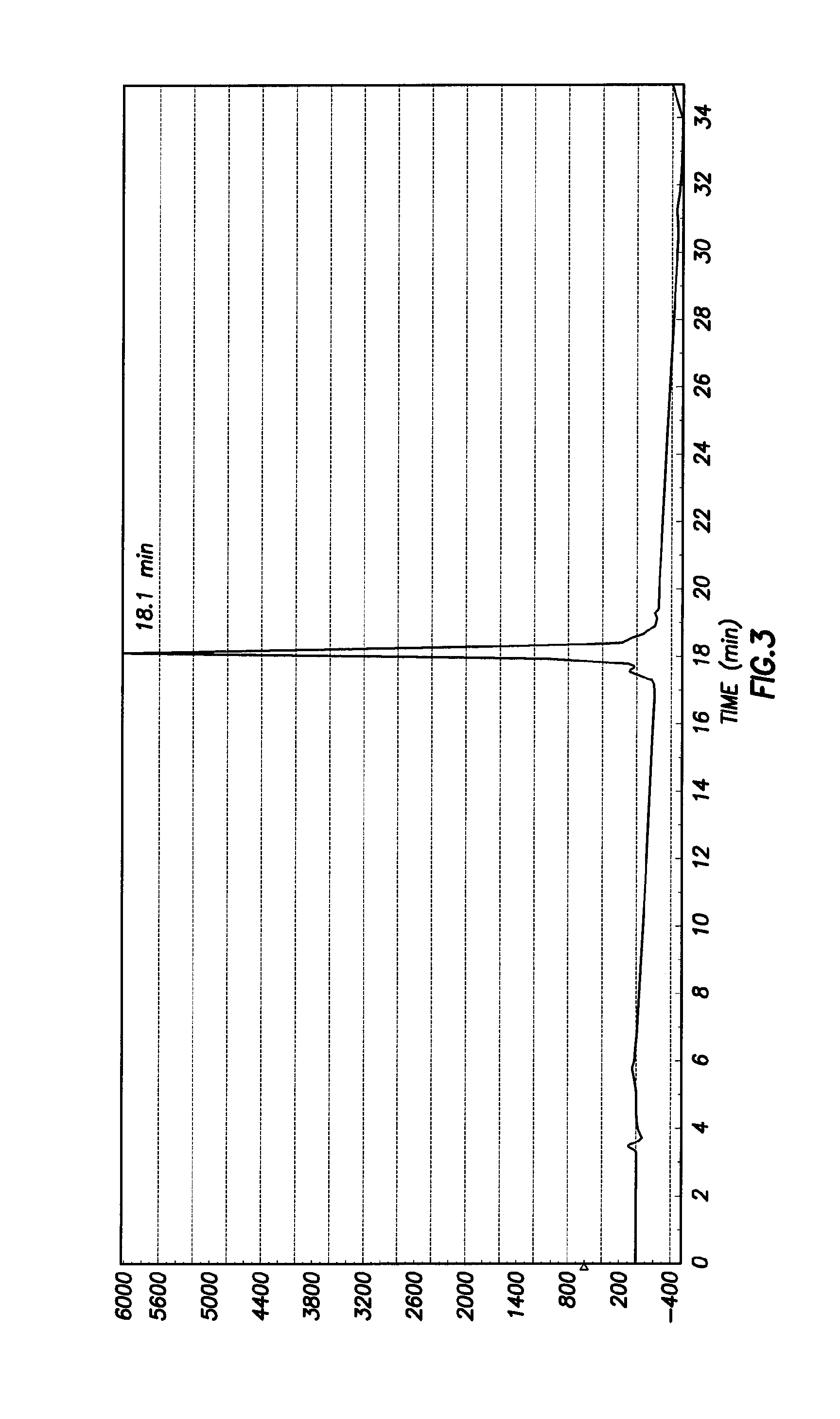Dual modality detection of apoptosis
a technology of apoptosis detection and dual-mode detection, which is applied in the direction of enzymology, drug composition, enzyme stabilisation, etc., can solve the problems that the use of such conjugates has not been shown viable in vivo to detect apoptosis or in optical imaging in the clini
- Summary
- Abstract
- Description
- Claims
- Application Information
AI Technical Summary
Benefits of technology
Problems solved by technology
Method used
Image
Examples
example 1
[0041]Synthesis of Ac-DEVD-R110-D-SAAC-Fmoc (2) To a solution of Ac-Asp(OBu-t)-Glu(OBu-t)-Val-CO2H (288 mg, 0.56 mmol) in anhydrous 1:1 mixture of DMF and pyridine (5 mL) was added N-(3-dimethylaminopropyl)-N-ethylcarbodiimide (110 mg, 0.56 mmol). The solution was stirred at room temperature for 30 min, and then (Asp(OBu-t)-R110-Asp(OBu-t)-SAAC-Fmoc (S2 of Example 2 Below) was added (116 mg, 0.113 mmol). The solution was stirred at room temperature for 3 days. After removal of the solvent under vacuum, the residue was dissolved in ethyl acetate and washed with saturated NaHCO3 (3 times) and brine (3 times), and the organic solution was dried over Na2SO4. Ethyl acetate was removed under vacuum, and the solid was treated with 50% TFA in dichloromethane for 30 min to remove the t-butyl-protecting groups. The product was purified by preparative HPLC to yield 50 mg (30%) of 2. 1H NMR (MeOD3): 1.00 (m, 2H), 1.45 (br, 2H), 1.65-2.50 (m, 10H), 3.25-3.35 (m, 20H), 4.09-4.62 (m, 10H), 6.60-6....
example ii
[0046]Amino acid derivatives were purchased from Novabiochem (San Diego, Calif.), Bachem (Torrance, Calif.), and Chem-Impex International (Wood Dale, Ill.). R110 was obtained from Acros (Morris Plains, N.J.). Other chemicals were obtained from Aldrich (St. Louis, Mo.) and were used as received. Reagent-grade solvents were used without further purification unless otherwise specified. Recombinant human TRAIL was purchased from Millipore (Billerica, Mass.). Alexa Fluor 594-annexin V conjugate, fetal bovine serum, and RPMI 1640 culture medium were purchased from Invitrogen (Carlsbad, Calif.). Caspase 3 and its inhibitor Ac-DEVD-CHO were purchased from Sigma (St. Louis, Mo.). Liquid chromatography-mass spectroscopy was performed on an Agilent LC-MSD-TOF system (Santa Clara, Calif.) in the positive ion mode using the electrospray ionization method. 1H and 13C NMR spectra were recorded on a Bruker DRX-500 spectrometer (Billerica, Mass.). Preparative high performance liquid chromatography (...
example 3
Cell-Permeable 99mTc(CO3)-Labeled Fluorogenic Caspase 3 and 7 Substrate for Dual Modality Detection of Apoptosi
[0059]All amino acid derivatives were purchased from Novabiochem (Pasadena, Calif.), Bachem (Torrance, Calif.), and Chem Impex International (Wood Dale, Ill.). Rhodamine 110 (R110) was obtained from Acros (Morris Plains, N.J.). Other chemicals were obtained from Aldrich-Sigma (St Louis, Mo.) and were used as received. Reagent-grade solvents were used without further purification unless otherwise specified. Recombinant human tumor necrosis factor related apoptosis-inducing ligand (TRAIL) was purchased from Millipore (Billerica, Mass.). Alexa Fluor 594-annexin V conjugate, fetal bovine serum (FBS), and RPMI-1640 culture media were purchased from Invitrogen (Carlsbad, Calif.). Caspase-3 and caspase-3 inhibitor Ac-DEVD-CHO were purchased from Aldrich-Sigma.
[0060]Liquid chromatography-high resolution mass spectra (LC-HRMS) was performed on an Agilent LC-MSD-TOF system in the pos...
PUM
| Property | Measurement | Unit |
|---|---|---|
| weight | aaaaa | aaaaa |
| weight | aaaaa | aaaaa |
| concentration | aaaaa | aaaaa |
Abstract
Description
Claims
Application Information
 Login to View More
Login to View More - R&D
- Intellectual Property
- Life Sciences
- Materials
- Tech Scout
- Unparalleled Data Quality
- Higher Quality Content
- 60% Fewer Hallucinations
Browse by: Latest US Patents, China's latest patents, Technical Efficacy Thesaurus, Application Domain, Technology Topic, Popular Technical Reports.
© 2025 PatSnap. All rights reserved.Legal|Privacy policy|Modern Slavery Act Transparency Statement|Sitemap|About US| Contact US: help@patsnap.com



